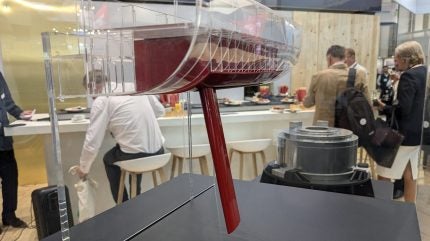
German hydrodynamic efficiency experts Becker Marine Systems, which is now majority-owned by Nakashima Propellor, has revealed a new product aimed at the growing fleet of wind-assisted cargo vessels.
The “Daggerboard” is a type of retractable keel, situated at the centre of the ship, which is designed specifically to arrest drift for vessels with retrofitted sail technology.
“It doesn’t matter if the new ships have rotors, a kite, fixed sails, or rigid sails, these ships will have a different manoeuvring behaviour than ships which are only propelled with a conventional system. So this “Daggerboard” as we call it, is brand new, and it’s supporting the core stability of the vessel, and this is actually reducing the friction and resistance of the ship,” explained Henning Kuhlmann, Becker managing director.
Speaking with Ship Technology at SMM, Kuhlmann revealed the new product had already attracted buyers.
Louis Dreyfus Armateurs, the Swiss firm selected by Airbus to build its new wind-assisted vessel, is the first of the new customers. The vessel will be fitted with Norsepower rotor sails and the new Becker product.
A second contract has been signed to supply the extendable keel to TOWT, the French shipowner.
“They are smaller vessels, purely sailing vessels with soft sails. They have just been doing… sea trials very successfully, where the design for the Daggerboard is slightly different. It’s not like the tilting version, it is telescopic. There is a telescopic cylinder that is bringing this unit into the hull in order to reduce resistance, [when] it is not needed,” Kuhlmann explained.
Becker began its wind-power projects with an attempt to build its own sail technology but shelved the product to return focus to its main sector: hydrodynamic efficiencies.
Kuhlmann said the development of wind-assisted ships, for environmental reasons, was unstable without keel or “daggerboard” technology alongside.
“If you are on a sailing boat, if you set your sails, you will drift. No way that you can control the ship. Of course, a cargo vessel is somewhat different. It’s much more heavy, has a different shape, but the principal challenge is there too, and I would not know why the companies which take care of this sail technology are not looking at the ship,” he said.



